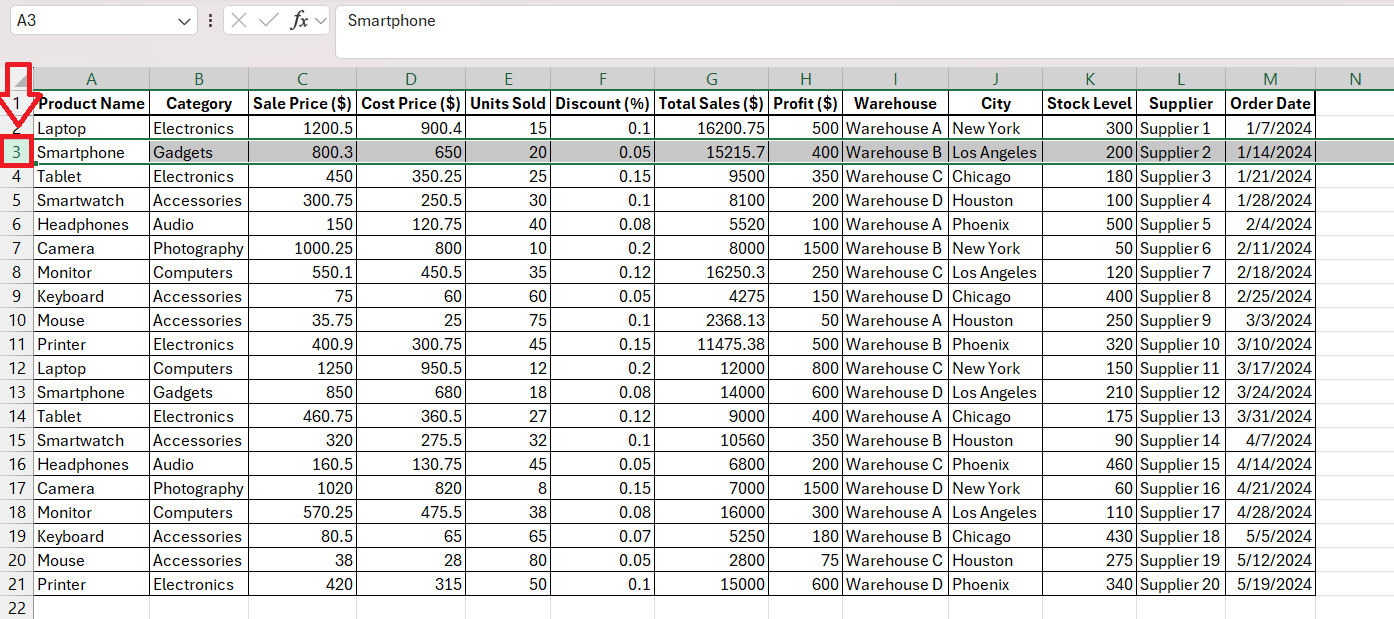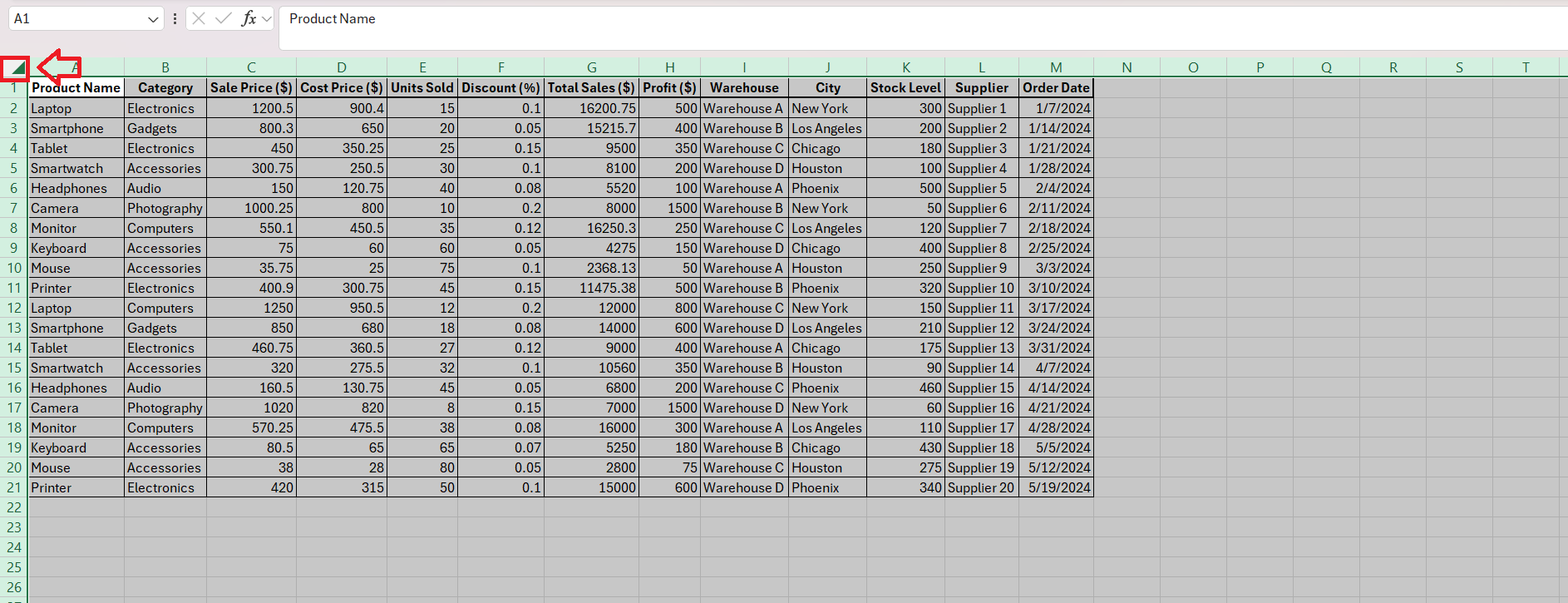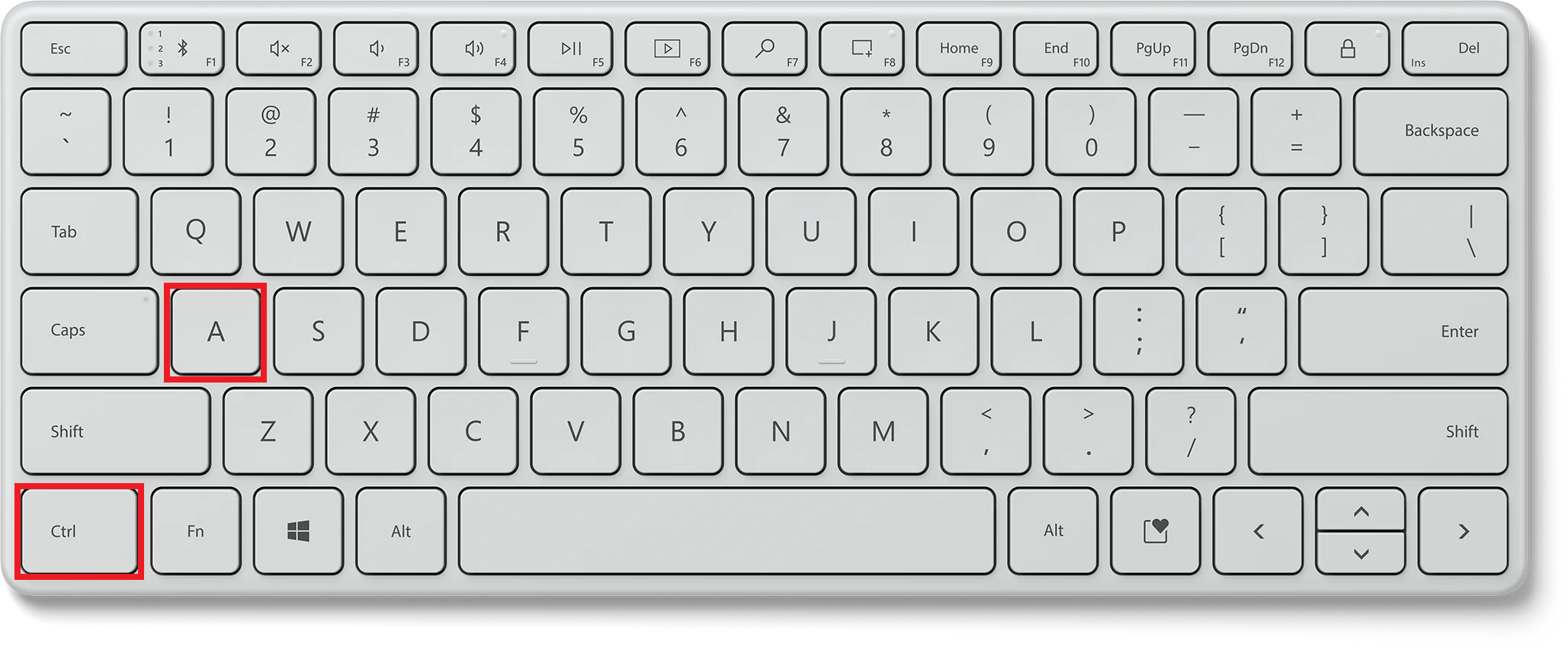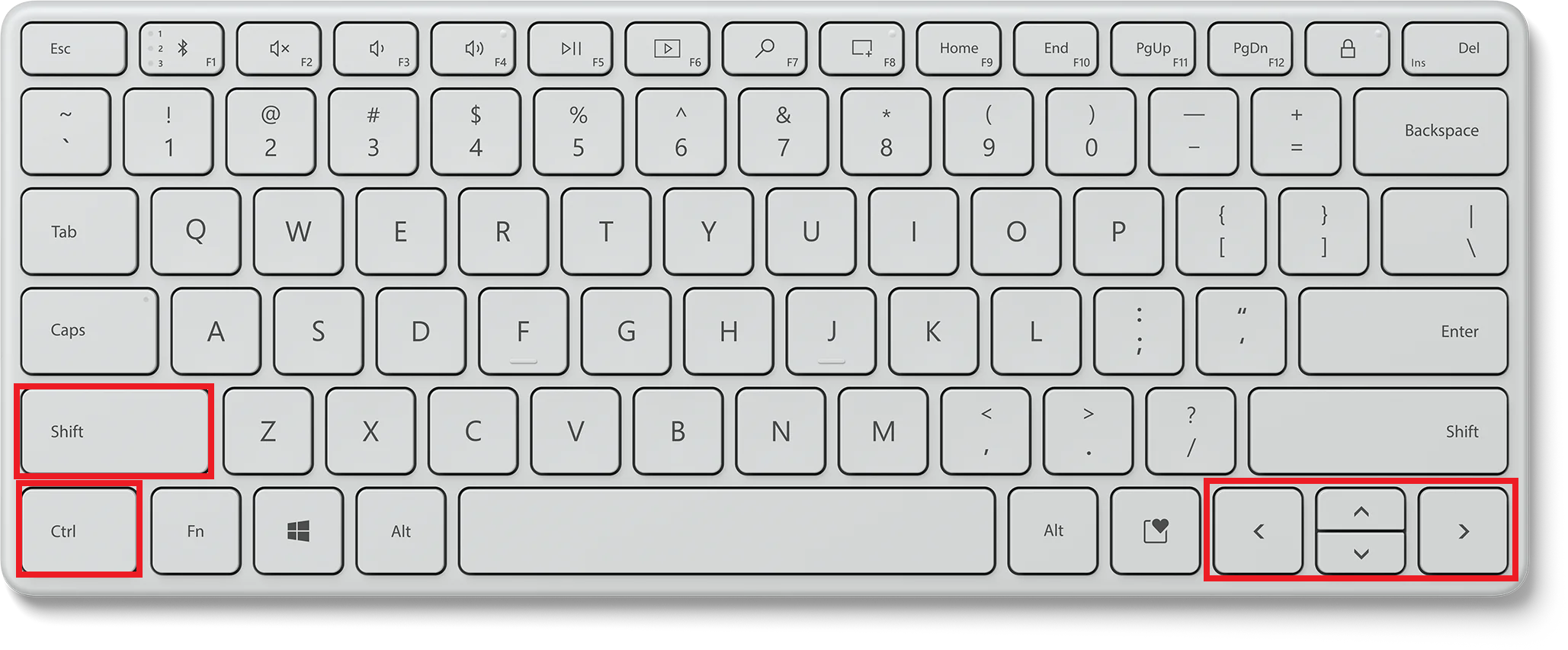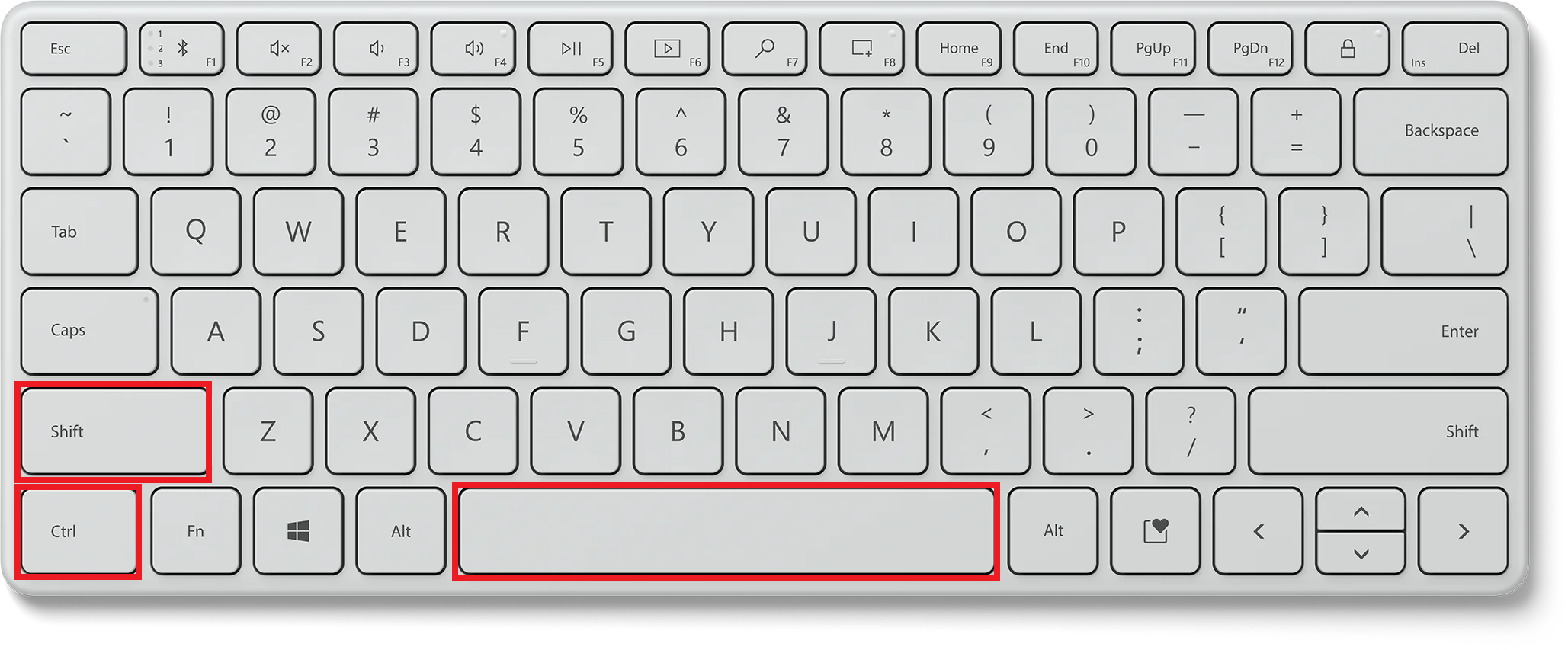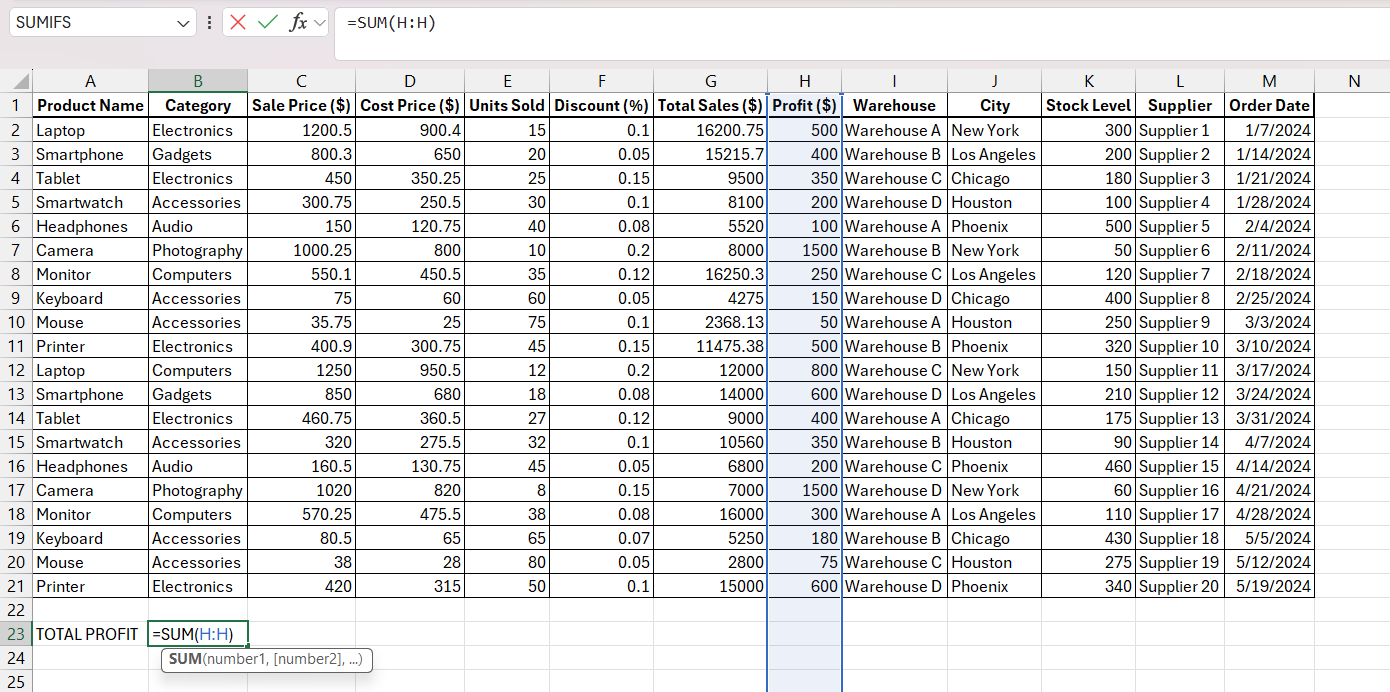When I need to work with a large set of data in Excel, being able to select all cells quickly can save me a ton of time. In this guide, I’ll walk you through a few simple methods to select every cell in a worksheet, making it easier to apply changes or analyze the data.
Key Takeaways:
- Efficient cell selection is essential for working faster in Excel.
- Use basic methods like the ‘Select All’ button or Ctrl + A to quickly select all cells.
- Keyboard shortcuts like Ctrl + Shift + Down Arrow help speed up selection tasks.
- The Name Box allows precise selection, even for non-contiguous cells.
- Selecting non-contiguous rows can be done by holding Ctrl and clicking row headers.
Table of Contents
Introduction
The Importance of Efficient Cell Selection in Excel
When we talk about being proficient with Excel, efficient cell selection is at the heart of it all. I’ve found that knowing how to swiftly maneuver through sheets and select the cells I need takes my productivity to new heights. It’s the foundation for everything from simple data entry to complex analysis.
And let’s face it, in a world where data is king, fluency in Excel makes us modern-day scribes, capable of presenting that data with clarity and precision.
Harnessing Basic Selection Techniques
Select an Entire Column or Row with a Click
For those who find themselves repeating tasks in Excel, the simplest gestures can make a profound impact. Selecting an entire column or row is as intuitive as a single click. We hover the mouse over the row number or the column’s top edge and – like magic – a small black selection arrow appears.
A click and an entire row or column succumbs to our command, ready to be manipulated, formatted, or analyzed in an instant.
Quick Ways to Select All Cells in a Table or Worksheet
To handle data efficiently, I’ve got a couple of quick methods at my disposal that never let me down when I need to select all cells. For instance, the top-left corner of the Excel worksheet is home to a small inverted triangle—I call it the ‘Select All’ button. A swift click on this, and I’ve just captured every cell in a blink.
For those who prefer keyboard commands, Ctrl + A is an ally. If I activate a solitary cell first and then hit Ctrl + A, everything on the sheet falls into the selection. However, if I’m starting within a data region, two presses are needed—Ctrl + A followed by Ctrl + A again.
Occasionally, the dataset resides snugly within a table, noncompliant with the margins of the worksheet. In such cases, I can jump into the data and deploy the keyboard shortcut: I hold down Ctrl, press A, and all cells of my dataset are selected, halting at any blank rows or columns Excel deems the end of the data’s territory.
Advanced Cell Selection Strategies
Keyboard Shortcuts to Accelerate Your Workflow
Keyboard shortcuts have become second nature to me, transforming my workflow into a symphony of keystrokes. For Excel, jumping to the edge of contiguous data is a breeze with Ctrl + Arrow Key, placing the cursor at the last filled cell in that direction.
It’s game-changing for navigating vast oceans of cells swiftly. Merging both Shift and Ctrl with an arrow key elevates my selection power as it fetches a block of data up to the border of the current dataset without breaking a sweat.
And for those instances when I want to stay put but summon an entire column or row to my cursor, Ctrl + Space or Shift + Space are my secret spells. These shortcuts call forth entire columns and rows (respectively) without me having to move an inch.
Utilizing the Name Box for Precision and Speed
Using the Name Box in Excel has been a game-changer for me, especially when dealing with larger or more complex spreadsheets. It steers clear of the scroll-and-drag routine, offering a precise selection method instead.
To harness the full potential of the Name Box, I begin by clicking it to activate, then enter the cell references—single cells, entire columns, or rows. This gift of precision also comes with speed; typing ‘H:H’ instantly hands over an entire column.
For those non-adjacent needs, the Name Box doesn’t flinch. I simply type ‘D:D,H:H,I:I’, and it swiftly complies by selecting multiple non-contiguous columns. It’s a sleek maneuver that cuts the clutter and exponentially speeds up my workflow.
FAQs: Mysteries of Excel Selection Solved
How Do I Select All Cells with Data Without Dragging the Mouse?
To select all cells with data sans the dragging ordeal, I tap into the convenience of the ‘Ctrl + A’ shortcut. A single press captures the cells with data in the current range, stopping at blank rows or columns. Doubling the keystroke, with ‘Ctrl + A’ twice, encompasses the whole table, headers included, in my selection—quick, simple, and thoroughly effective.
Is There a Shortcut to Select All Cells Below the Current One?
Absolutely, there is a shortcut that comes in handy for this task. By pressing ‘Ctrl + Shift + Down Arrow’, I highlight all the cells below the current one until it hits the first empty row. It’s my go-to for rapid vertical selection.
Can You Select Non-Contiguous Rows Based on Cell Value Directly in Excel?
Directly in Excel, without additional tools, there isn’t a native single-step process to select non-contiguous rows based on cell value. However, I can use a combination of filtering to display the rows of interest and then utilize the ‘Ctrl’ key technique to manually select each row—a bit more hands-on but effective nonetheless.
What is the shortcut to select all cells below in Excel?
The shortcut to select all cells below a specific point in Excel is to press ‘Ctrl + Shift + Down Arrow’. This expands the selection down to the last populated cell before any empty cell is encountered.
How can I quickly select non-contiguous rows?
To quickly select non-contiguous rows, hold down the ‘Ctrl’ key while clicking on the row headers for each row you want to include in your selection. This way, you can efficiently cherry-pick only the rows you need without affecting any others.
John Michaloudis is a former accountant and finance analyst at General Electric, a Microsoft MVP since 2020, an Amazon #1 bestselling author of 4 Microsoft Excel books and teacher of Microsoft Excel & Office over at his flagship MyExcelOnline Academy Online Course.

